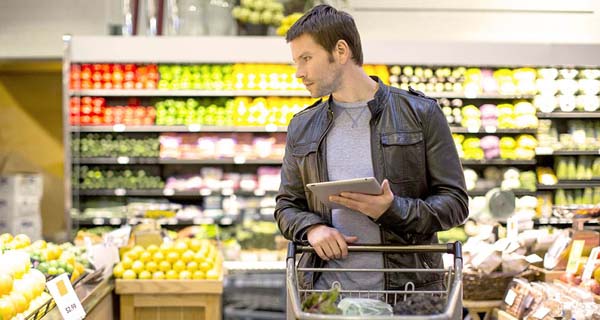
How the very essence of the value chain is changing? At the Consumer Goods Forum Global Summit, that kicked off last week in New York, thousands of industry managers and ceo were there to explore the future of retailing. There was an important starting point: more than half of the Fortune 500 companies had disappeared since 2000 and the majority of their replacements had been born in the digital age. As online sales continued to expand, three areas had emerged as priorities: omnichannel, digital marketing and mobile.
John Philips, senior vice president of customer supply chain and go-to-market at PepsiCo, said PepsiCo was clearly committed to digital and had really embraced it. “We wanted to reach consumers regardless of main physical outlet or the screen they were on, and wanted truly explore the boundary between the physical and digital”. For example, “Cheetahpult campaign” – he notes – “allows consumers to use their smartphones ad livello controllers for a game staged on YouTube, and bringing wereables to a South by Southwest session which tracked participant movements and unlocked different brand interventions”.
But digital potential, according to Philips, could be fully realised through collaboration. Wearables, for instance, only came alive with apps. So for consumer goods industry, retailers and manufacturers could only achieve real synergies by bringing all of their digital assets together? This is the fundamental question se had to ask ourselves, said Muthar Kent, chairman of the board and ceo of the Coca-Cola Company. “The answer is a sea change in how sustainably people wanted to live. What they bought, how they bought it and when they bought it had all changed. With these new market realities providing an impetus to action, new realities in collaborative business in are rising. The very essence of the value chain is changing”. Being a healthy, successfull business is what enables companies to provvide livelihoods for its associates, invest in its communities and create partnerships with suppliers and customers.
Victoria Mars, chairman of the board of Mars Incorporate said that “only by creating mutual, win-win relationships with all of Mars’ stakeholders could they drive growth, which in turn created financial freedom”. They used that freedom to operate the way they wanted to as a private, family- owned company, albeit in collaboration”.
We needed partnerships between governements, academics, scientists and suppliers, and pre-competitive collaboration with other industry players. Real, fundamental and lasting change could only be achieved through some truly game-changing collaboration across all these groups”. Victoria Mars announced the creation, in collaboration with Danone, of the Livelihoods Fund for Family Farming, investing in projects that helped them and others how to sustainably source mateial from smallholder farmers.
Marks and Spencer replied that had committed to being trials to phase out the use of HFCs andreplace them with low carbon alternatives. “The scope of this ambition is tremendous because the world’s stock of commercial refrigerators and freezers ran int the millions” said ceo Marc Bolland. Over 2,000 stores this time, operated by the likes of Marks and Spencer, Carrefour, Walmart, Migros, Ahold had already implemented the trial. While Coca Cola, PepsiCo, Nestle and Unilever had installed millions of new chillers between them. “Simply by getting involved and committing to understand what the trial is about” – Bolland said- ” could already make a tremendous difference to the future”.
Turning to the theme, Paul Bulke, ceo of Nestlé SA, observed that consumers are willing to pay for value created ad delivered, not destroyed. “Products safety initiatives responded to the demands of a zero risk society. Leadership efforts around heath and safety andin sustainability were undertaken to support consumers, employees and society in their expectations or healthier and more enviromentally responsible lives” he added. Winning companies are expected to led changes to produce positive outcomes for both today and decades to come.
